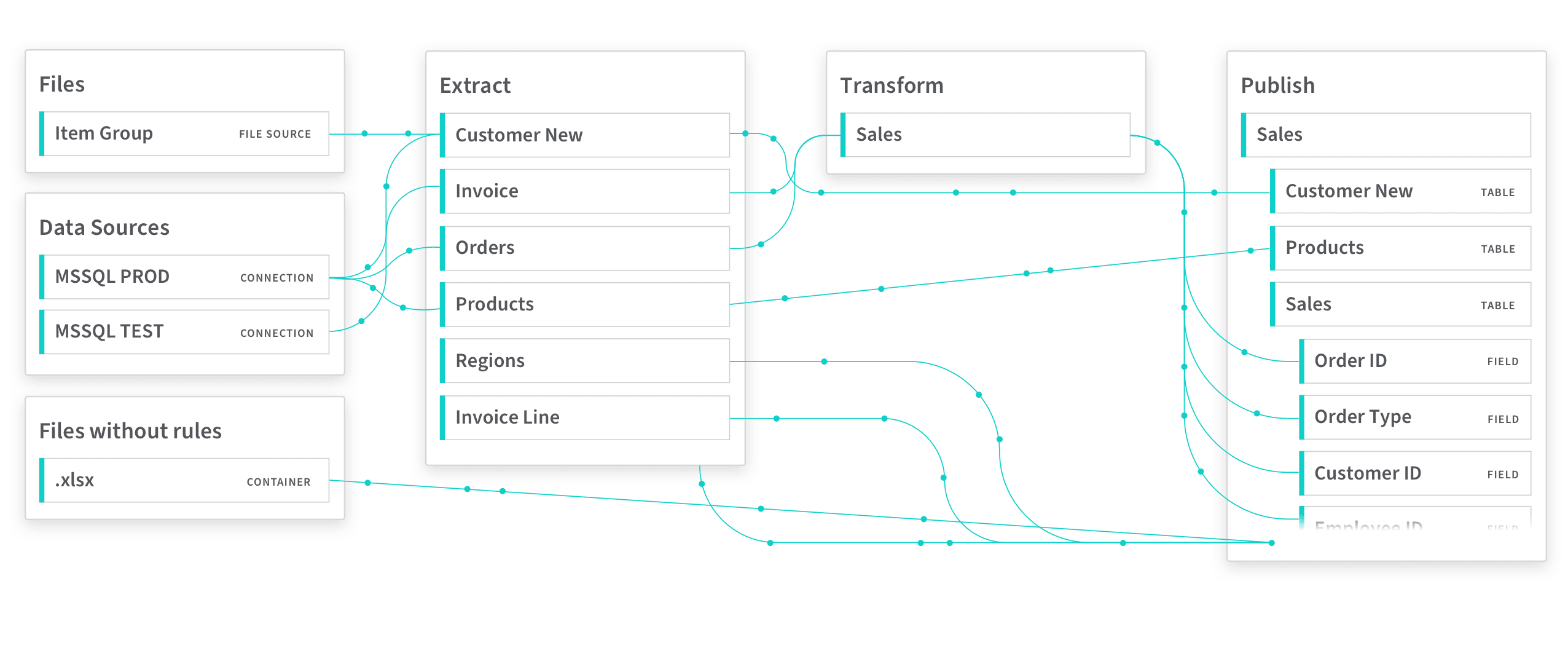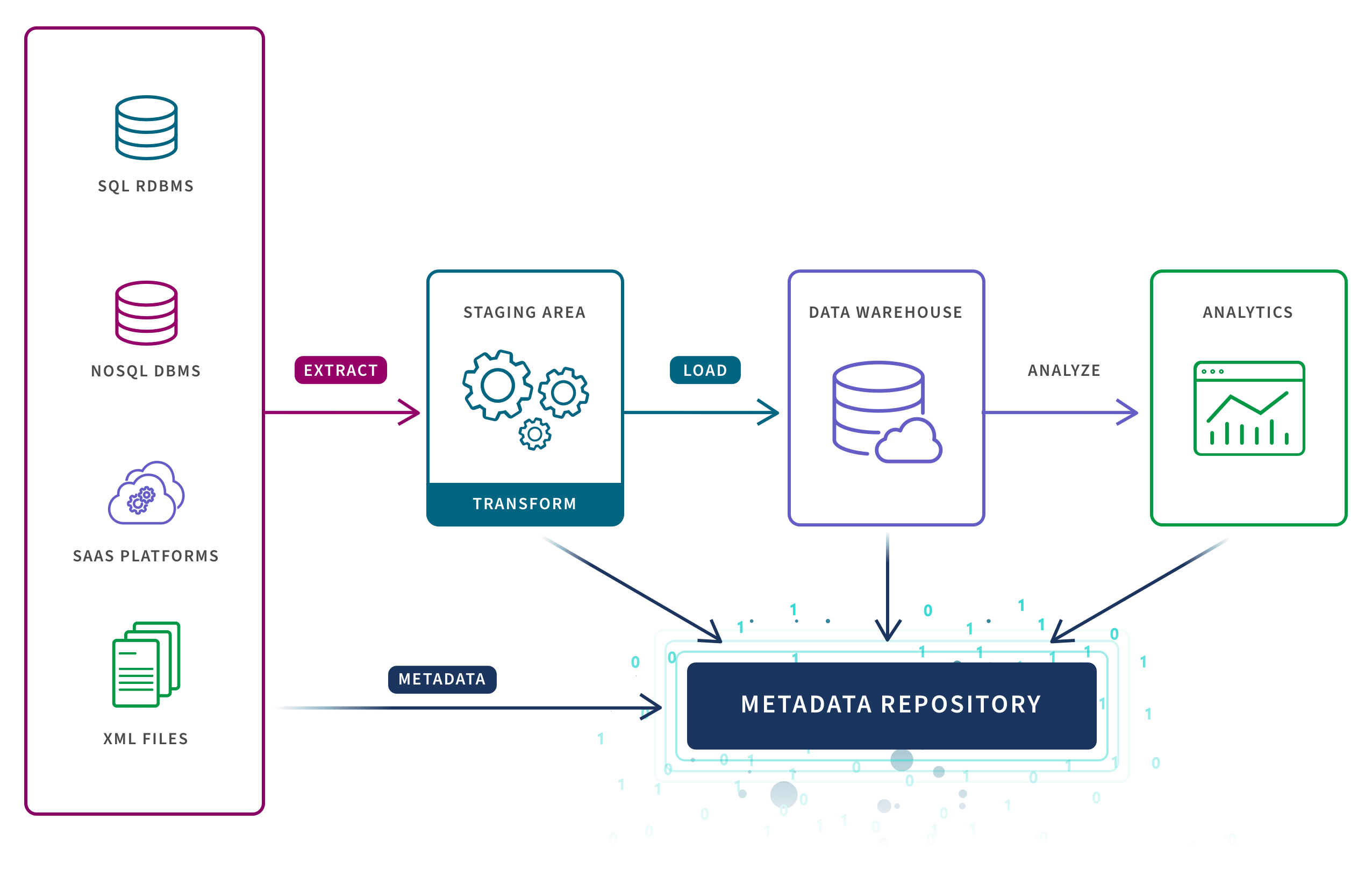How Data Lineage Works
A modern data lineage tool gives you instant visibility into the source and journey of your data. You can see how the data lineage example below would give you confidence in your data and help you trace any errors back to the root cause.

Data lineage creates a data mapping framework by collecting and managing metadata from each step, and storing it in a metadata repository that can be used for lineage analysis. (Metadata is defined as “data describing other sets of data”.) For each process applied to data in its journey, the metadata is updated as shown in the simplified data lineage diagram below.
















































